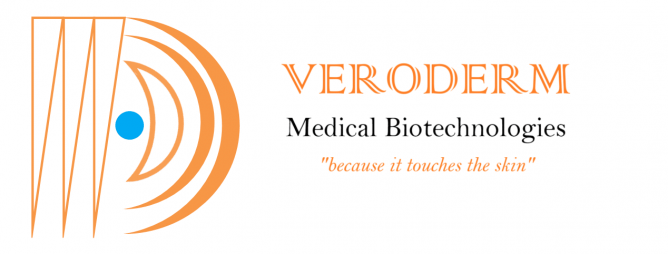Advanced Skin Care Solutions
For Cellular Health of Periwound Skin
Long-lasting, pH-balanced, durable skin cream formulated to apply on skin and peri-wound skin to:
- Avoid skin damage
- Prevent Dehydration
- Avoid Ischemic skin formation
- Relief pain
- Improve skin vascularity
- Revives skin and subcutaneous cells and tissues.
A polymer technology that provides breathable, low dermatitis potential, non-irritating, and long-lasting moisture barrier protection that is gentle to the skin.
- Avoid skin dehydration & Ischemic skin
- No comedogenic reactions.
- No Skin maceration
- For all Ages & Skin Types
Product General View
VeroSheild Spray Solution is a direct skin contact solution for external use and application only on the skin and on peri-wound skin.
- Moisturizes dry skin
- Does not cause occlusions
- Skin-protective and moisturizing properties, protecting skin from irritants and helping to soothe inflammation.
- Has antiseptic, anti-inflammatory with rich in fatty acids to soften and protect the skin.
- Gentle – Alcohol-free, low dermatitis potential formula won’t sting or irritate skin and can be used on intact or damaged skin
- Hypoallergenic
- Versatile – Solution for many skin problems including medical adhesive-related skin injury (MARSI), peri-wound skin damage, peristomal skin damage, incontinence-associated dermatitis, and other moisture and friction skin damage prevention needs
Designed for All Skin Types & Patients with Autoimmune Conditions
Skin management is just as important as wound bed preparation in wound healing. The goal of peri-wound management is to maintain an optimal moist wound healing environment while preventing skin breakdown and infection. Skin is more vulnerable in patients with certain comorbidities and conditions.
Periwound skin breakdown is just one of the culprits that delay wound healing and increase pain. It is important to identify conditions and risk factors early in your wound assessment to help prevent any risk of wound progress declination.
A patient’s quality of life is already compromised when a wound develops, and complications such as peri-wound skin damage can be avoided. One must take into consideration that every patient with a wound is vulnerable to further skin breakdown.
Avoid All Four Categories of Moisture-Associated Skin Damage With VeroMed+
The Four Categories of Moisture-Associated Skin Damage are:
- Incontinence-associated dermatitis (IAD): Inflammation and skin erosion associated with exposure to urine and/ or stool.
- Intertriginous dermatitis: Intertrigo is skin-skin or skin-to-device inflammation related to perspiration, friction, or bacterial and/ or fungal bioburden.
- Periwound moisture-associated dermatitis: Wound exudate that has sustained contact with the skin and caused damage. Inflammation and erythema to skin with or without erosion.
- Peristomal moisture-associated dermatitis: Inflammation surrounding a stoma resulting from sustained contact with stool or urine.
Periwound Assessment
The wound assessment should include the peri-wound and surrounding skin, extending 4cm from the wound bed. Assessing wound location, shape, color, edges, margins, peri-wound, and surrounding skin is most significant in a thorough wound evaluation. The peri-wound and wound margins are good indicators for identifying the wound type, infection, and moisture balance and for managing the plan of care.
A peri-wound assessment is similar to a wound assessment; however, it is helpful to keep a few more key factors in mind:
- Periwound temperature
- Exudate amount
- Wound location
- Periwound shape
- Periwound color
- Wound depth
Periwound Characteristic Terms
- Abscess: Collection of fluid within tissue that is a result of an acute or chronic localized infection.
- Erosion: Loss of some or all of the epidermis.
- Epibole: Wound edge that is thickened and rolled under.
- Hyperkeratosis: Callous-like tissue formation at wound edges that can extend around the wound.
- Induration: Firmness of tissues.
- Crepitus: Air or gas accumulation in tissues.
- Pitting edema: Fluid in tissue that can be indented.
- Non-pitting edema: Fluid in tissue under the skin that is taut and shiny and cannot be indented.
- Secondary cutaneous infection: Most often candidiasis.
- Maceration/denuded: Both of these terms mean inflammation and erosion of the skin caused by prolonged exposure to various sources of moisture, including urine or stool, perspiration, exudate, ostomy effluent, mucus, and saliva. Otherwise known as moisture-associated skin damage (MASD), this is based on the chemical content of moisture, friction, and the presence of pathogens.
Periwound Skin Breakdown Prevention and Management
Any break in the skin is at risk for peri-wound breakdown and/ or complications. Prevention, treatment with appropriate dressings, and managing the peri-wound regularly will ensure that wound healing progress is moving toward the goal of wound closure.
For more information please contact info@veroderm.com

